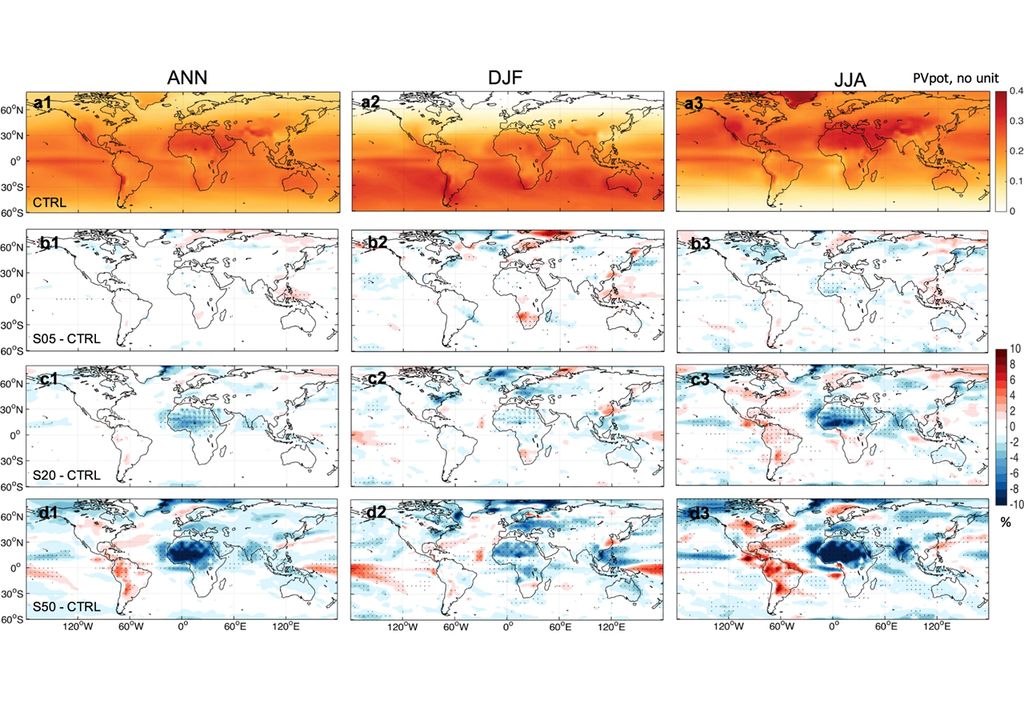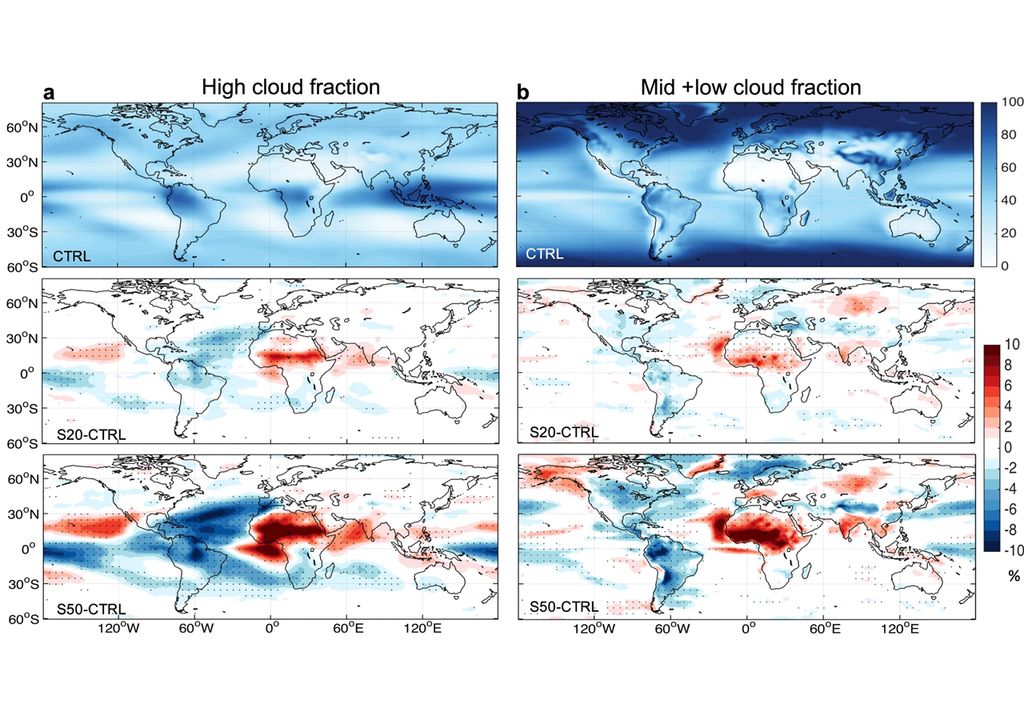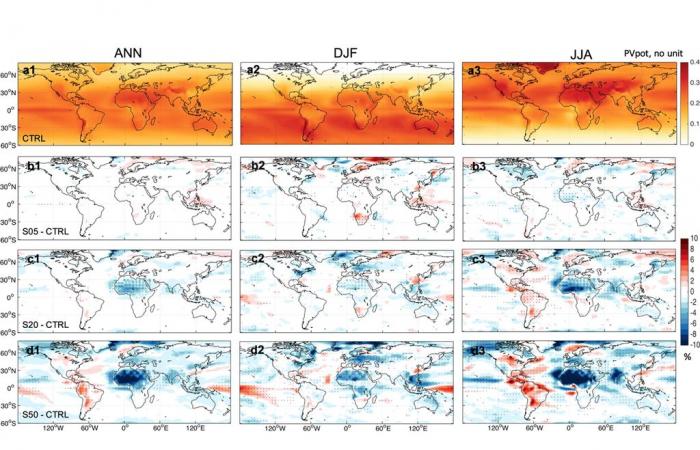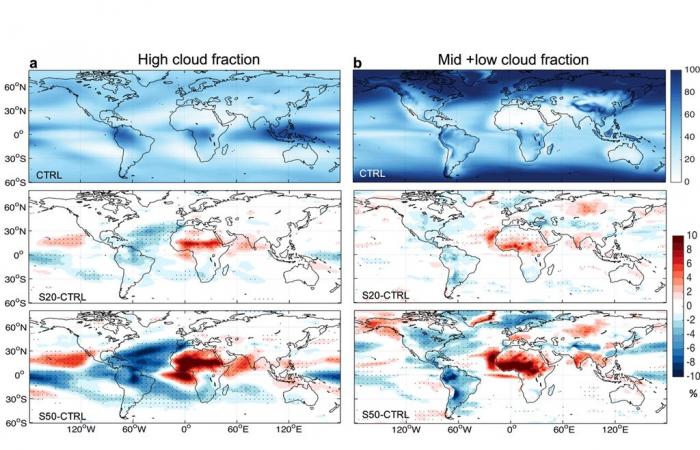Every day, the energy that reaches Earth from the Sun is 15,000 times more than what humanity uses. Sothe decision not to replace fossil energies with renewables is not a question of scarcity, but of technology to make the most of these resources.
Solar panels have come a long way in recent decades, especially in terms of thermal storage. Today’s batteries allow energy to be stored for 24 hours, so that it can be used at night and during cloudy hours. So, what prevents us from covering an extensive sunny and inhospitable territory, like a desert, with a huge network of panels that provide energy to the entire planet? The answer is clear: the secundary effects.
Enhanced climate change
Researchers envision the possibility of transforming the largest desert in the world, the Sahara, into a gigantic solar farm, capable of satisfying up to four times the planet’s current energy demand. There are already projects planned in Tunisia and Morocco, with the aim of supplying electricity to millions of homes in Europe.
But doing so on such a large scale can cause serious problems. A new study published in Nature, concluded that the massive deployment of solar panels can alter the circulation of winds on the planet and modify the climate even in places very far from the desert.
Solar panels modify the natural properties of the Earth’s surface, such as surface albedo and roughness.
The researchers ran simulations of huge solar farms in North Africa, covering 5%, 20% and 50% of that region, and assessed the consequences. The first thing they noticed is that the panels are much darker than sand, so they absorb more heat and the energy reflected back into space (albedo) decreases. This produces extra warming of the environment, not only locally, but globally.

The model revealed that when the solar park covers 20% of the total surface of the Sahara, a feedback cycle is triggered. The heat emitted by solar panels generates a notable temperature difference between the earth and the surrounding oceans. This, in turn, reduces air pressure at the surface and causes moist air to rise and condense into raindrops.
Covering 20% of the Sahara with solar farms raises local temperatures in the desert by 1.5°C. At 50% coverage, the temperature rise is 2.5°C. Globally, the average temperature would rise by 0.16°C for 20% coverage and 0.39°C for 50% coverage.
With the increase in monsoon rains, lVegetation grows and the desert reflects less energy from the Sun, since plants absorb light better than sand and soil. As vegetation expands, more water evaporates, creating a more humid environment that further supports plant growth.
Okay, but Getting energy and turning the desert into an oasis sounds incredible, doesn’t it?
An unstoppable chain of changes
Strange as it may seem, Many of the largest and most complex ecosystems depend on the arid Sahara Desert. The Amazon, for example, is fertilized by dust that travels across the Atlantic from the Sahara, and Saharan heat influences rainfall patterns due to Atlantic winds. Removing dust from the air and cooling the Sahara could significantly affect the Amazon.

In the simulations, the narrow band of rainfall in the tropics, which accounts for more than 30% of global precipitation and supports the Amazon and Congo rainforests, shifts northward. This causes droughts in the Amazon region, since less moisture arrives from the ocean.
Furthermore, the model predicts a increased frequency of tropical cyclones that would impact the coasts of North America and East Asia and less cloud cover in Central America, South America, South Africa, the central and eastern United States, central Asia, and northwest China, especially in summer. While in other regions, such as the Sahara Desert, there will be a greater amount of cloud cover, which will cause the panels to produce less energy.
The Atlantic Ocean is also fertilized by dust from the Sahara Desert. Its nutrient-rich sand feeds the proliferation of phytoplankton. These bloom events produce much of the Earth’s oxygen, so we may also see a drop in oxygen levels.
In addition to all these consequences, which already make us reconsider the idea of building a solar park in a desert, It must be considered that solar panels become less efficient when temperatures exceed 45 °C.
News reference:
Long, J., Lu, Z., Miller, P.A., et al. Large-scale solar photovoltaic parks in the Sahara affect the global solar energy generation potential. Community Terrestrial Environment 5, 11 (2024). https://doi.org/10.1038/s43247-023-01117-5










